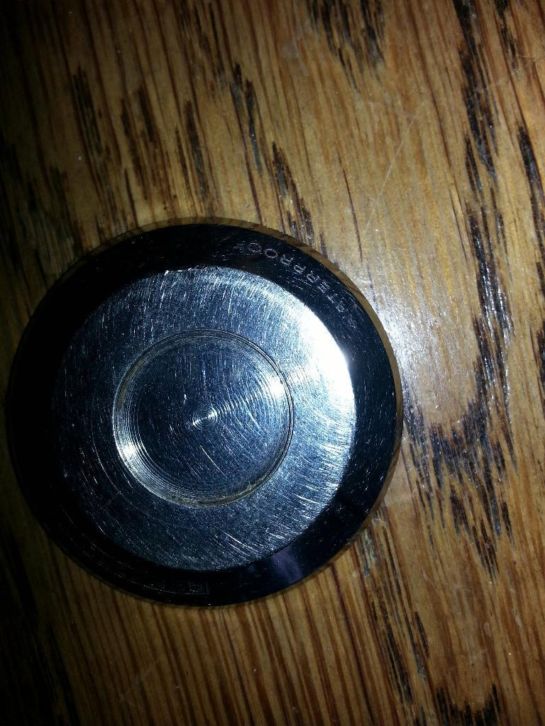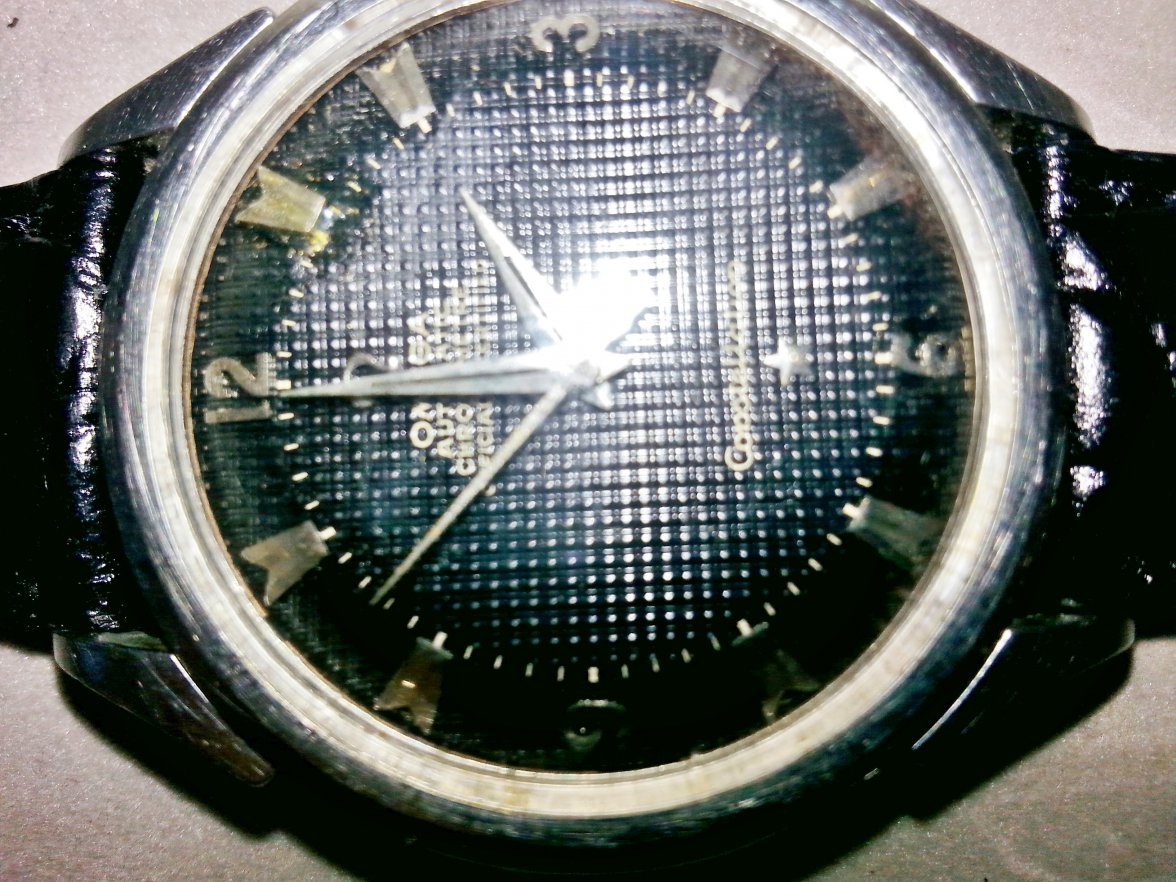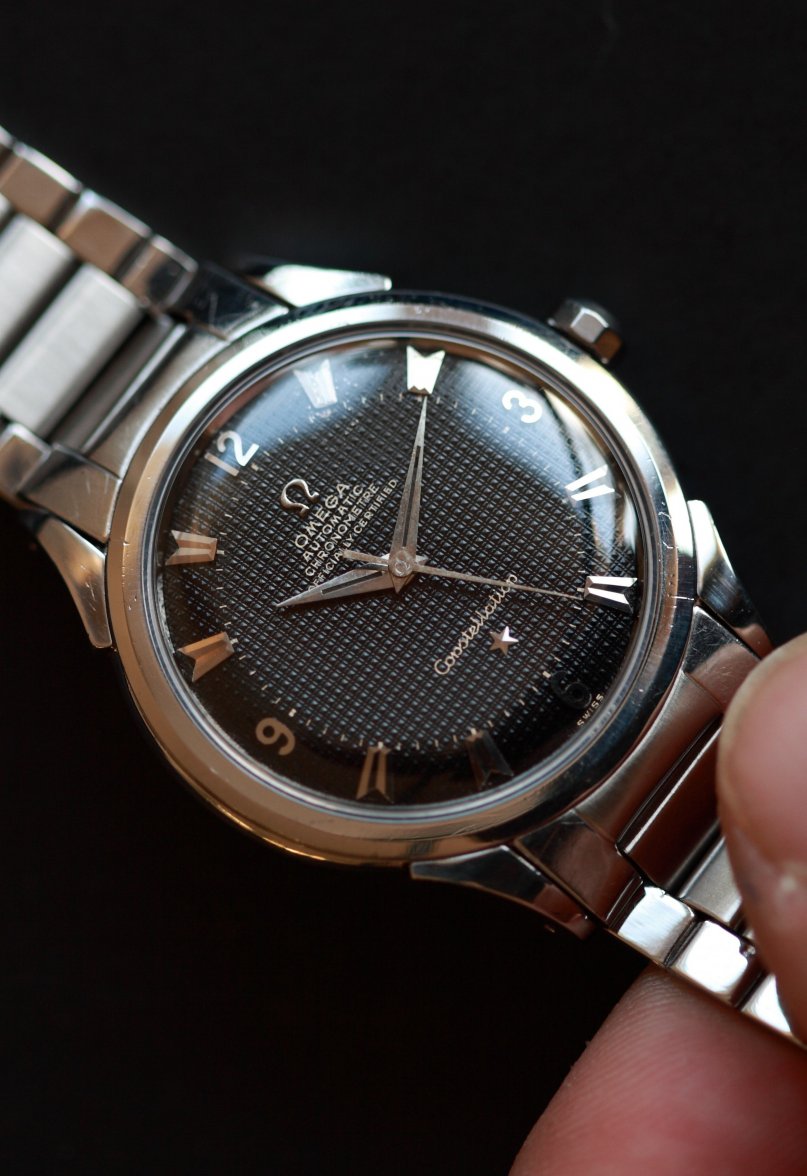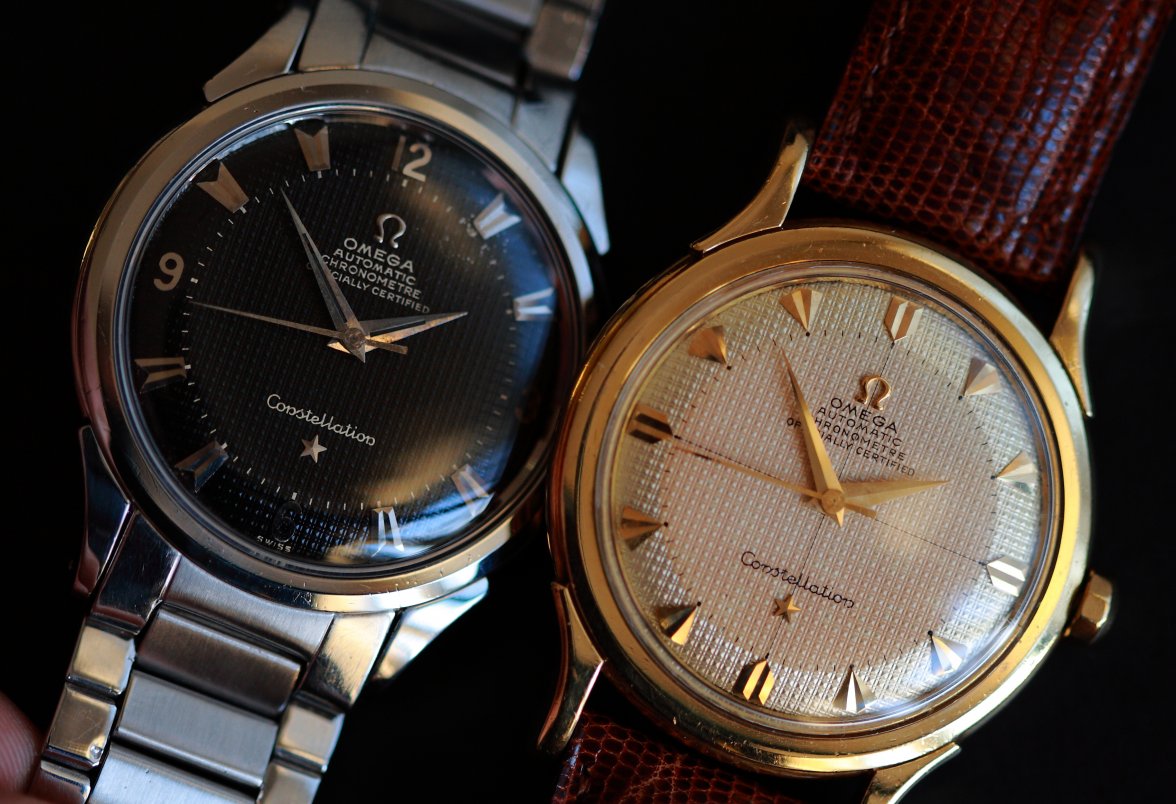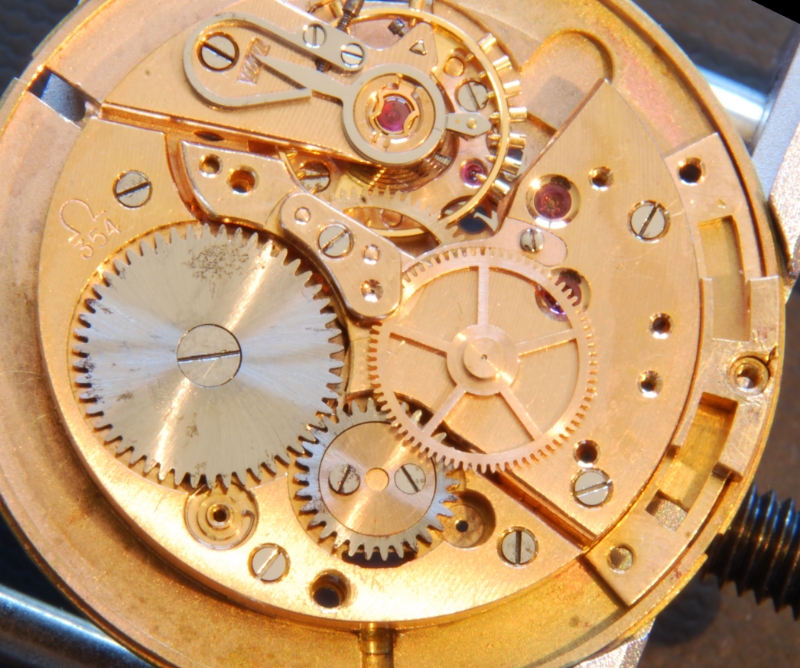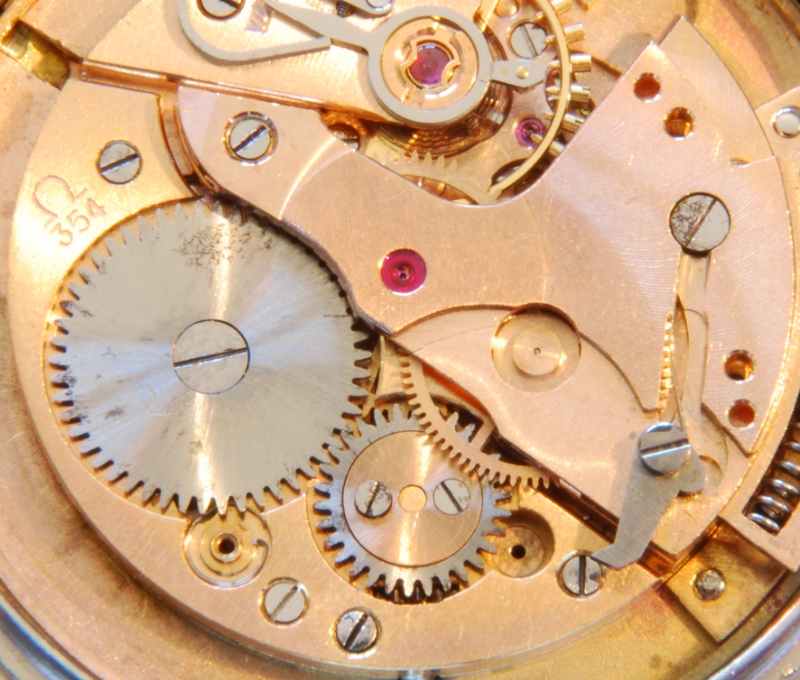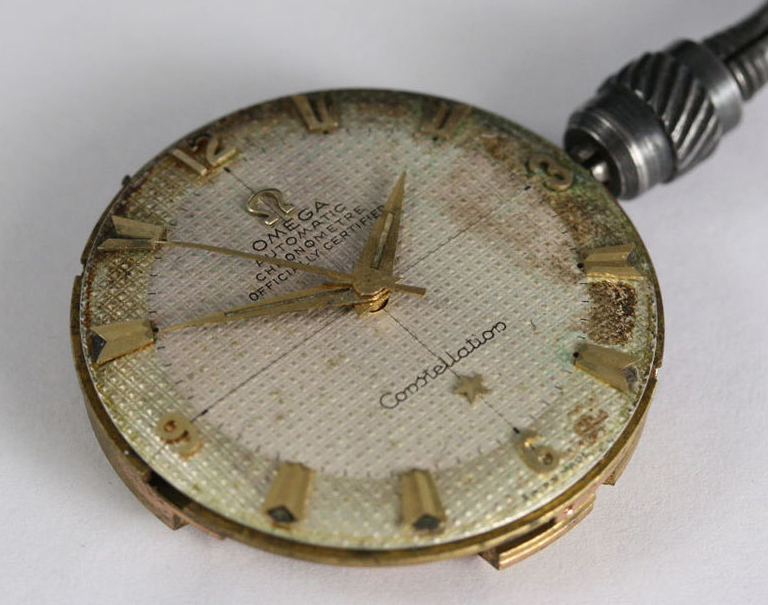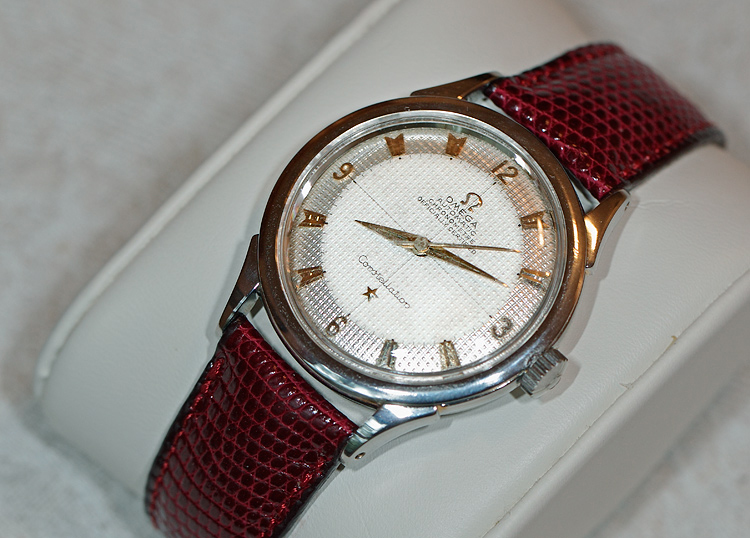cristos71
·So I´ve been collecting for about 13 years now and one of the things that first drew me in to Omega in the beginning of my watch collecting was the variety of models available within the different lines, especially the Seamasters and Constellations of the 1950´s to 1970´s.
One of the really fascinating aspects of this period was the creativity within the Omega dial design department, the dial designers seem to have just been a fountain of ideas, coming up with many interesting textures, colours and finishes.
Nowhere is this more noticeable than in the early period of the the Constellation range ( and to a lesser extent the Seamaster chronometers of this period ) and more specifically in the early 1950s and with bumper 354 and 352 references.
Quite a wide range of dial designs seem to have made it through from the drawing board to the production stage. This makes it very interesting from a collecting standpoint as although there was great variety in the dial designs of this period it did not necessarily translate into large production numbers per design leading to the opportunity to once in a while find something not that often seen.
This 2782 cal 354 Constellation was advertised locally with the two pictures below and a very short description. Spotting it for what it was, a seldom seen hobnail, but in very poor shape, I immediately made contact with the seller and after some haphazard email communication over a few days, during which time I thought the piece lost on a couple of occasions, I managed to reserve the watch and make a viewing/buying appointment.
Another sellers picture showing some `dial repairs`. At this stage I was still not sure about whether I was going to buy it due to the appalling appearance of the dial in these pictures and the general state of the rest of it.
It was clear the 1´0´clock indices had been dislodged and poorly glued back on at the wrong angle, there looked to be glue smeared across quite a large section of the dial, it wasn´t running, it was missing the crown and also the medallion.....what else was wrong with it and could it be saved?
The sellers original pictures were so poor that I was hopeful that if in hand the watch could only look better so I jumped in the car and headed off to the appointment.
Coming from the daughter of the original owner it had obviously had a pretty hard life before ending up in the back of a drawer for the best part of fifteen years in this non-running condition. She had no idea how it had gotten into such a sorry state but told me her father had owned it since new. When he passed she had hoped to fix it up it but that had just never happened.
I assessed it as being worth a go at restoration and after a nice chat purchased it. Here is my first wrist shot of a beat up Constellation and a close up of that ugly glued on marker.
Really the bodge job of all bodge jobs! The glue is smeared over the dial and rides up and over the mis-aligned 1´0´clock marker and has aged to a yellowish colour. Under a loupe it looks to have melted into/fused with the black print. I really wasn´t hopeful at this stage that anything could be done to successfully rectify the dial.
So off to my watchmaker we went, the first thing was to discuss the dial and what to do. After long deliberations I decided to let him attempt to remove the glue and correctly reattach the marker, the risk being that the glue wouldn't want to come off and would take the dial printing with it. His idea was to soften the glue up with a hairdryer and then try and clean it off with wooden toothpicks and the suchlike
In the end the hairdryer wasn´t used as under the microscope he had spotted an air bubble under the glue layer and instead had painstakingly used wooden toothpicks to gently apply pressure to this area which eventually expanded the air bubble across the dial and slowly but surely lifted the glue. The marker was released, re-riveted and all markers and hands cleaned.
A risky and labour intensive job but when he sent me the first picture I was very happy indeed at what had been achieved.
Now for the rest of the watch, it turns out the reason the cal 354 wasn´t running was that the movement had at some point been incorrectly reassembled. Possibly by the same ``watchmaker`` who ``repaired`` the dial....
To quote my watchmaker, ``The gear on the third wheel was mounted too high which drives the second axle where the second hand is mounted. As long as the automatic rotor bridge assembly is not fitted the movement will continue to run, but when mounted the timepiece will stand still.``
This was fixed during a further normal service with no additional problems. Phew!
I received a crown from a generous OF member which unfortunately didn´t fit so ended up ``borrowing`` one from a lesser 2652 that I have, a new crystal was fitted as when I bought it the crystal was non original and without a crystal retaining ring.
The next deliberation point was the case. Having both dress and sports watches in my collection I can appreciate the accumulated battle scars on a steel watch as much as the next collector. On a sports watch I would have left it exactly as it was but for me on this dress watch the steel case had just started to look too tatty, dull and unattractive.
Therefore after much deliberation, toing and froing, sleepless nights and changing of my mind I eventually decided to let my WM give the case front and lugs a light going over with the clear instructions to leave some aging visible.
Last week after a two month wait I got the call and was very, very pleased to see the transformation to what I think is a beautiful black swan 😀
One of the really fascinating aspects of this period was the creativity within the Omega dial design department, the dial designers seem to have just been a fountain of ideas, coming up with many interesting textures, colours and finishes.
Nowhere is this more noticeable than in the early period of the the Constellation range ( and to a lesser extent the Seamaster chronometers of this period ) and more specifically in the early 1950s and with bumper 354 and 352 references.
Quite a wide range of dial designs seem to have made it through from the drawing board to the production stage. This makes it very interesting from a collecting standpoint as although there was great variety in the dial designs of this period it did not necessarily translate into large production numbers per design leading to the opportunity to once in a while find something not that often seen.
This 2782 cal 354 Constellation was advertised locally with the two pictures below and a very short description. Spotting it for what it was, a seldom seen hobnail, but in very poor shape, I immediately made contact with the seller and after some haphazard email communication over a few days, during which time I thought the piece lost on a couple of occasions, I managed to reserve the watch and make a viewing/buying appointment.
Another sellers picture showing some `dial repairs`. At this stage I was still not sure about whether I was going to buy it due to the appalling appearance of the dial in these pictures and the general state of the rest of it.
It was clear the 1´0´clock indices had been dislodged and poorly glued back on at the wrong angle, there looked to be glue smeared across quite a large section of the dial, it wasn´t running, it was missing the crown and also the medallion.....what else was wrong with it and could it be saved?
The sellers original pictures were so poor that I was hopeful that if in hand the watch could only look better so I jumped in the car and headed off to the appointment.
Coming from the daughter of the original owner it had obviously had a pretty hard life before ending up in the back of a drawer for the best part of fifteen years in this non-running condition. She had no idea how it had gotten into such a sorry state but told me her father had owned it since new. When he passed she had hoped to fix it up it but that had just never happened.
I assessed it as being worth a go at restoration and after a nice chat purchased it. Here is my first wrist shot of a beat up Constellation and a close up of that ugly glued on marker.
Really the bodge job of all bodge jobs! The glue is smeared over the dial and rides up and over the mis-aligned 1´0´clock marker and has aged to a yellowish colour. Under a loupe it looks to have melted into/fused with the black print. I really wasn´t hopeful at this stage that anything could be done to successfully rectify the dial.
So off to my watchmaker we went, the first thing was to discuss the dial and what to do. After long deliberations I decided to let him attempt to remove the glue and correctly reattach the marker, the risk being that the glue wouldn't want to come off and would take the dial printing with it. His idea was to soften the glue up with a hairdryer and then try and clean it off with wooden toothpicks and the suchlike
In the end the hairdryer wasn´t used as under the microscope he had spotted an air bubble under the glue layer and instead had painstakingly used wooden toothpicks to gently apply pressure to this area which eventually expanded the air bubble across the dial and slowly but surely lifted the glue. The marker was released, re-riveted and all markers and hands cleaned.
A risky and labour intensive job but when he sent me the first picture I was very happy indeed at what had been achieved.
Now for the rest of the watch, it turns out the reason the cal 354 wasn´t running was that the movement had at some point been incorrectly reassembled. Possibly by the same ``watchmaker`` who ``repaired`` the dial....
To quote my watchmaker, ``The gear on the third wheel was mounted too high which drives the second axle where the second hand is mounted. As long as the automatic rotor bridge assembly is not fitted the movement will continue to run, but when mounted the timepiece will stand still.``
This was fixed during a further normal service with no additional problems. Phew!
I received a crown from a generous OF member which unfortunately didn´t fit so ended up ``borrowing`` one from a lesser 2652 that I have, a new crystal was fitted as when I bought it the crystal was non original and without a crystal retaining ring.
The next deliberation point was the case. Having both dress and sports watches in my collection I can appreciate the accumulated battle scars on a steel watch as much as the next collector. On a sports watch I would have left it exactly as it was but for me on this dress watch the steel case had just started to look too tatty, dull and unattractive.
Therefore after much deliberation, toing and froing, sleepless nights and changing of my mind I eventually decided to let my WM give the case front and lugs a light going over with the clear instructions to leave some aging visible.
Last week after a two month wait I got the call and was very, very pleased to see the transformation to what I think is a beautiful black swan 😀
Edited:

